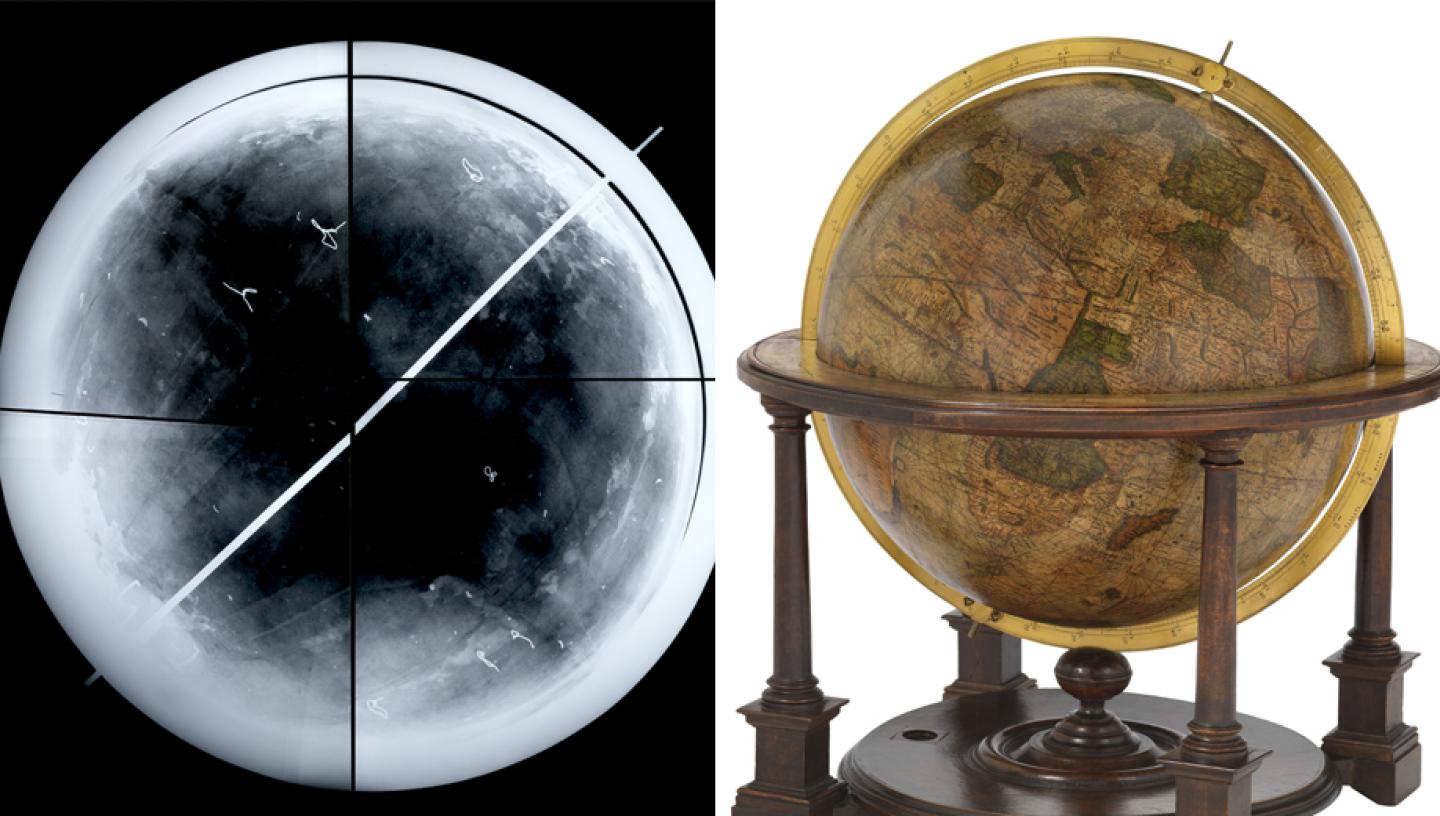
Table globes are truly beautiful objects, with historic representations of the Earth and stars captured in intricate detail. But take a look beneath the surface and the marvels get more mysterious...
Most globes in the collection of the National Maritime Museum are made in a similar way: a sphere, usually made as two paper maché hemispheres which are then joined together, is coated in plaster, and then has paper ‘gores’ (the segments which have the map on them) pasted over the top.
The sphere was then often varnished before being set into a ‘meridian ring’ (which passes through the north and south poles), and a horizontal horizon ring.
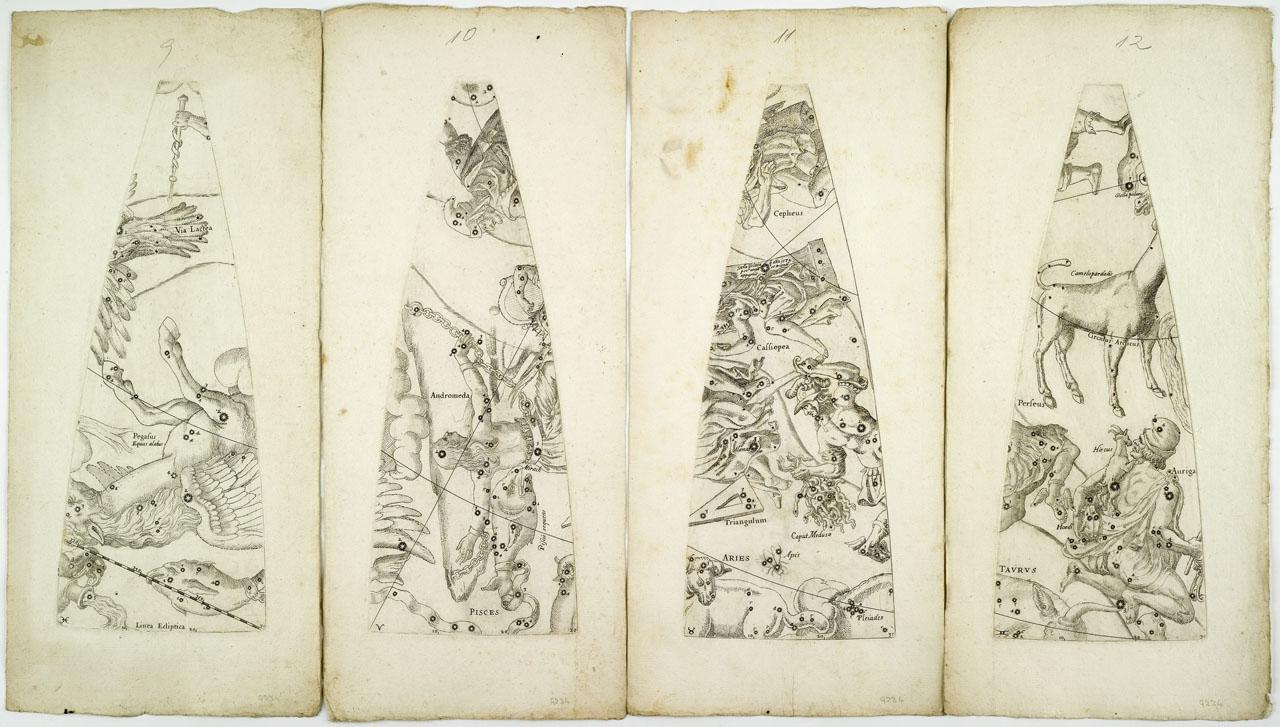
Although there are many similarities in how globes are constructed, at the National Maritime Museum X-rays have allowed us to look inside. This reveals things about how the globes were made which we wouldn’t otherwise know.
And that’s interesting because it helps us understand a bit more about globe making as a craft. We don’t know very much about the people who actually made globes – that would have been done in a workshop, and although it was highly skilled work it wasn’t particularly prestigious.
So while we might know the name of the cartographer who designed the gores, we don’t know the names of people who constructed spheres, pasted on gores, and set the globes in stands. What looking inside the globes reveals, however, is the variety of construction methods and techniques used to make globes. This offers a tantalising glimpse into the thought, skill and creativity which went into globe making.
With these images of a terrestrial globe from 1730, you can see a wooden central support, with nails at and around the north and south poles. You can also see how while one set of nails has been clinched (bent over), the other has not. Because two hemispheres have been joined together, and the maker would only have had access to the interior to clinch the nails at one pole.
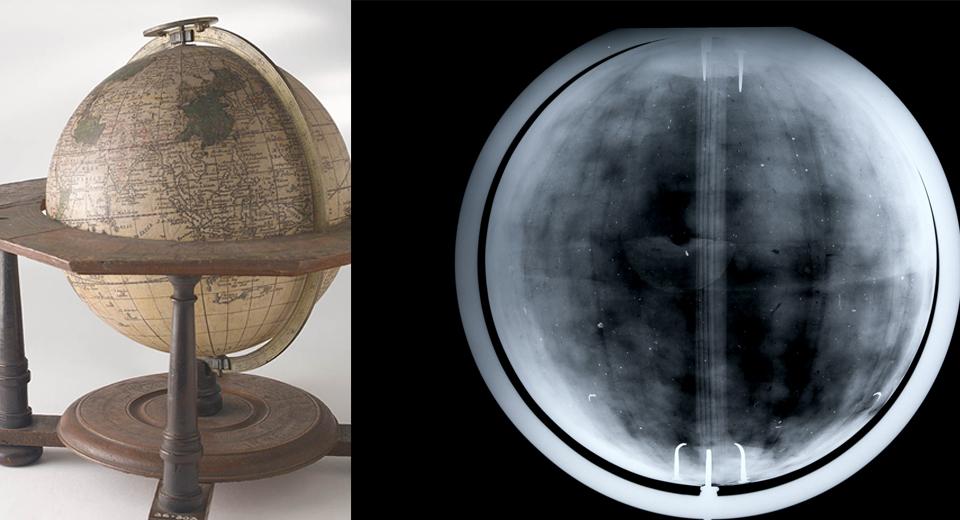
Not all globes had only one support though. This one, a terrestrial globe from around 1620, has three different supports going across its interior.

And here, extensive reinforcement of the structure of the sphere using nails is a remarkable feature of this 1705 celestial globe.
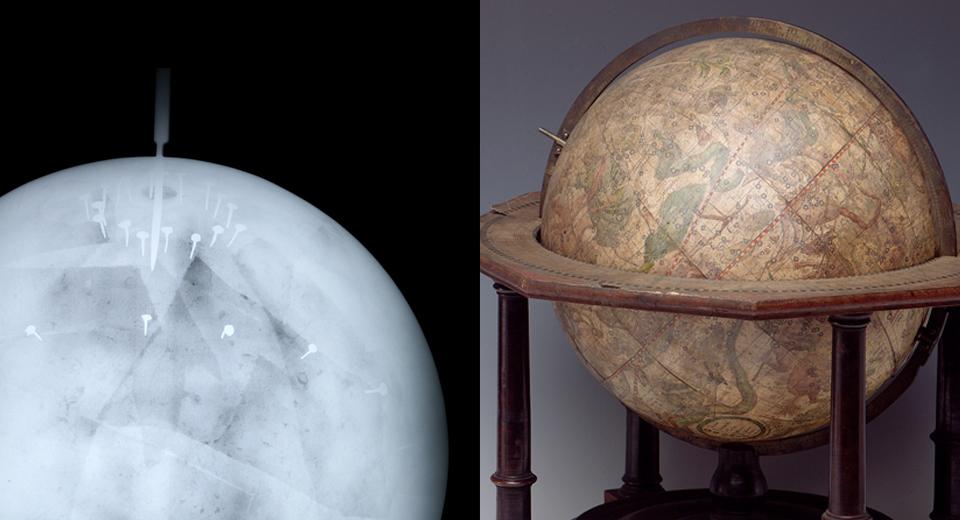
This 1621 terrestrial globe didn’t need any additional internal support at all. The X-ray indicates it’s made of solid wood!

You can also see different ways in which a globe’s insides were held together. Here, you can see how parts of Mercator’s 1541 terrestrial globe are held together with wire ties.
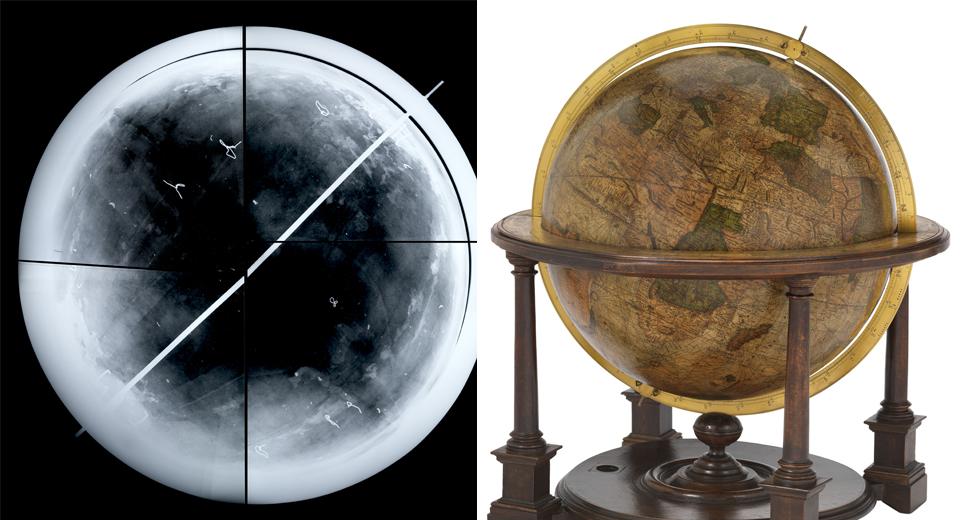
Whereas in this 1589 terrestrial globe by the van Langren family, you can see stitching keeping the globe together underneath the gores and the plaster.
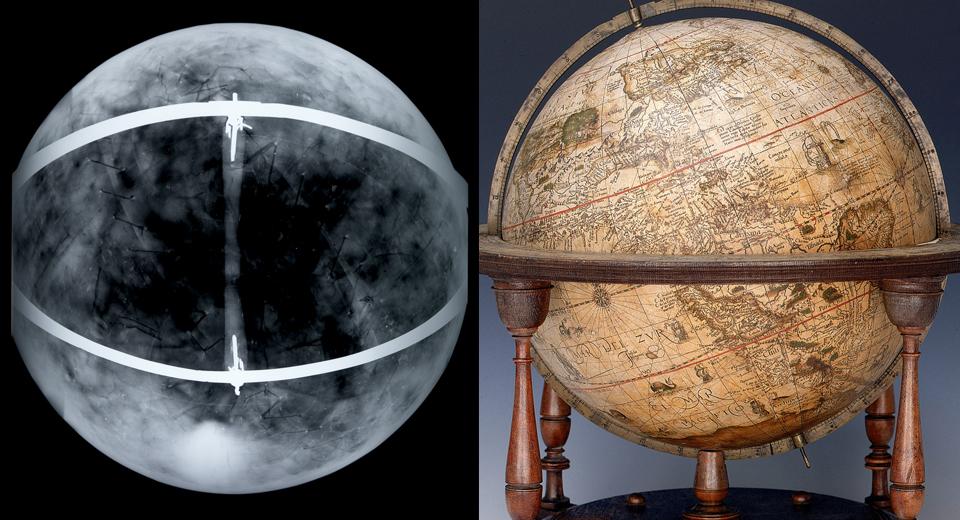
While globes like this 1551 celestial globe by Gerard Mercator were luxury objects, the materials used inside the globe were often scraps and leftovers. Here you can see how the heads of the nails around the poles are made from odd off-cuts of metal.
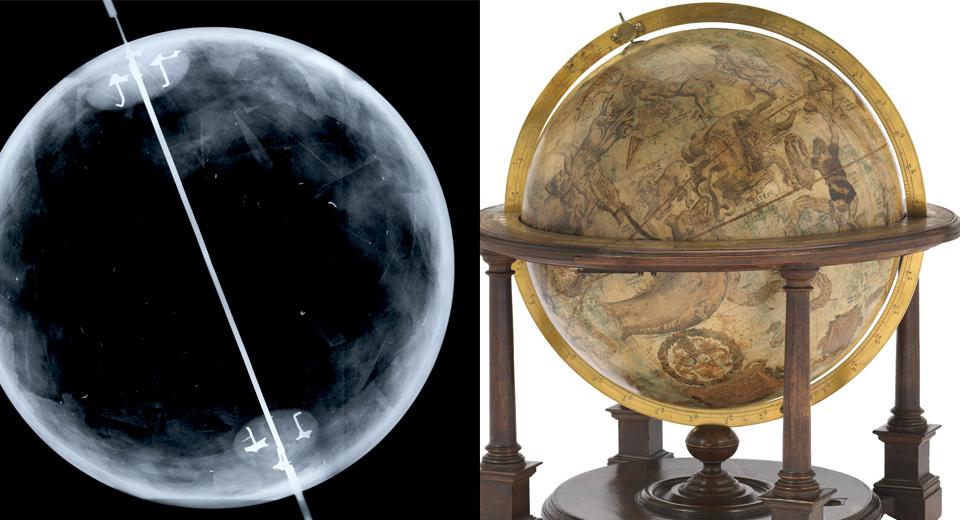
Reusing and repurposing was very common. When globes break, we generally see that the paper inside is scrap paper which has already been printed on. The X-ray of this 1764 terrestrial globe reveals wax seals - the sort which held letters shut - in the interior.
We’re not sure whether this is because the paper inside (used as a ‘release’ to make removing paper mache from a mould easier) is old letters from which the seals have not been removed, or if wax and a stamp which was to hand was used to hold the paper together. What do you think?

Sometimes, X-rays show us something about what's on the outside, too. On this Islamic celestial globe, the X-ray image shows the metals used to put features on to the globe: lines in gold, some of the figures using a red pigment made using lead.
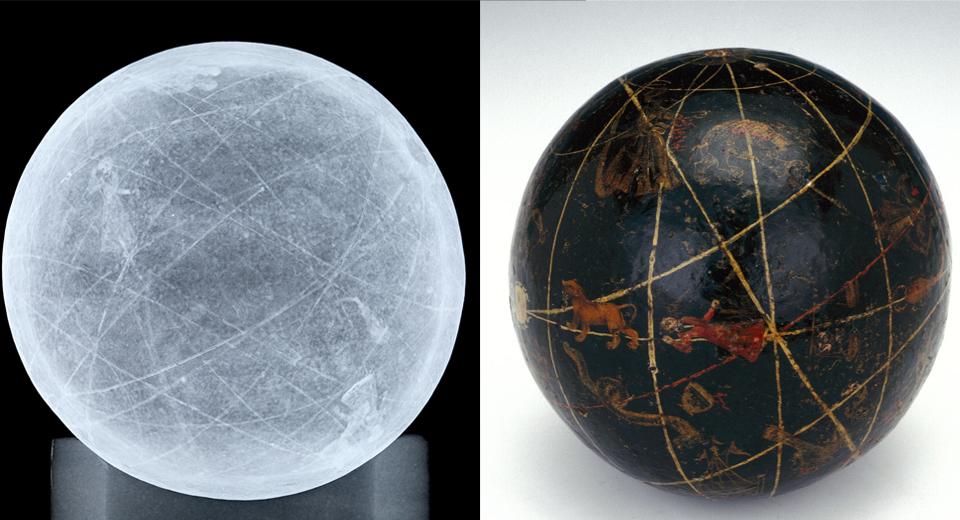
And can you see the constellation Cygnus on the X-ray of this 1625 celestial globe by Arnold van Langren, painted using lead white?

There are many more of these ghostly-looking globe images available to view via Collections Online – why not explore the collection for yourself?